Watercolor Painting Techniques: Wet-on-Wet, Wet-on-Dry, Dry-on-Dry

Watercolor Painting Techniques
When painting with watercolors most artists struggle with finding the right method for applying their colours to the paper. This method is that what we call Watercolor Technique.
I usually work with the common watercolor techniques:
- Wet-on-Wet
- Wet-on-Dry
- Dry-on-Dry
What does this mean? Which watercolor painting technique works best for which area? How do we get smooth washes? How do we get control about our washes? How to have the colours flow on the paper?
Watercolor Painting Technique: Wet-on-Wet
The wet-on-wet method allows you to get smooth washes and also to have the colours flow on the paper.
Wet-on-wet means: Wet paint on wet paper
Wet at first your paper and then you apply your colours into this wet area. The colours always follow the water. If there are areas which aren’t covered with water then the colour will not flow there.
Note: The main rule is that the pigment always follows the water.
When the paper is not wet enough, the pigment doesn’t flow.
You must find the right balance -the paper needs to be wet – but not too wet.
Take a piece of paper and wet an area. Make it really wet and then apply some colours.
Beside this area wet another area, but not so wet as the first area and then apply again some colours. Let it dry!
When it is dry you will see immediately the difference. The area with more water will lighten the colours much more. But you also will note that you got hard edges.
Note: Watercolor are always lighter when they dry
Watercolor Painting Technique: Wet-on-Dry
The wet-on-dry method allows you to get more control about your washes.
Wet-on-dry means: Wet colour on dry paper
Your paper is dry. You load your brush with your colours and then apply them on the dry paper. This also creates hard edges and you need to soften them immediately before the washes is completely dry. I use a moist brush and then soften my edges. You also can use this method for mixing colours on your paper. Just apply your colours maybe side by side and let them flower into each other. As long as the wash is wet the colours will flow.
Watercolor Painting Technique: Dry-on-Dry
The dry-on-dry method allows you to add details to your painting
Dry-on-dry means: Dry colour on dry paper
Your brush is mostly dry (of course we always need a bit of water to get some paint on our brush), but it is only a bit of water to just pick some of our colour. Then we add the wanted detail to our painting.
To paint with watercolors needs a lot of practice. And the more you paint your will become confident how to apply your colours to your paper.
Note: Your watercolor technique – with which you feel confident – will come naturally to you and then you will paint without thinking about it.
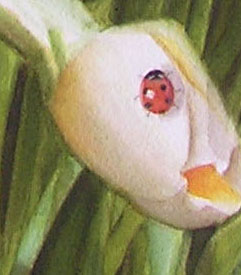 I only work with the common watercolor painting techniques in my watercolor paintings. Each watercolorist will use one of these techniques. But there is a difference in style. I love to paint in a realistic and still want to have painterly touches. Others love to create photorealistic artwork and others like to create loose watercolors.
I only work with the common watercolor painting techniques in my watercolor paintings. Each watercolorist will use one of these techniques. But there is a difference in style. I love to paint in a realistic and still want to have painterly touches. Others love to create photorealistic artwork and others like to create loose watercolors.
(The painting left shows you that I used the dry-on-dry technique for adding the details to the ladybug).
When I was filming my rose painting for my first Watercolor Video I realized that I often simply applied my colours on the dry paper and immediately used a damp brush to soften the edges of this washes. Sometimes I wet my area first with clear water before I added the colours. I just do this 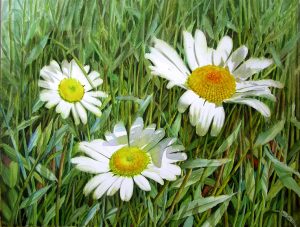 without thinking about it. I don’t think that we need special watercolor painting techniques to create our watercolors. It is just the knowledge which we need to have like how to build the form, how to handle our edges, how to describe our subjects in the best way, how to create neutral colours, how to create darks etc. etc.
without thinking about it. I don’t think that we need special watercolor painting techniques to create our watercolors. It is just the knowledge which we need to have like how to build the form, how to handle our edges, how to describe our subjects in the best way, how to create neutral colours, how to create darks etc. etc.
I too work with a lot of different surfaces, if it is 140 Lb coldpressed paper, 140 Lb hotpressed paper, 300 Lb coldpressed paper, Aquabord, Crescent Watercolor Board, lighter paper, heavier paper etc. And each surface will be handled differently. As excample: it is hard to work in layers when working on Aquabord. But I always like the challenge to master the surface. And I still cannot say which surface I prefer the most. But having the right knowledge what I need to know about painting helps to master the different surfaces and still to get the wanted result. It is a never ending journey.
Watercolor painting techniques will come naturally without thinking about it the more we paint. I think the most important point is that we love to paint and that we enjoy the whole process.
Make your painting process as simple as possible
I like to keep my painting process as simple as possible. As excample: My painting ‘Innocence’ (see left) was painted in two hours and there was nothing to do more at it. No additional brushstroke would have added something more to the message.
But often it is needed to add more layers, to start with yellow underwashes, to lift colours etc. when I am not happy with the result. The image displayed right was painted on the same surface but I worked with a lot of more layers. Each painting has its own charme no matter which watercolor painting techniques were used. I too work often with too thin layers as when I would be too shy to add immediately strong colours to my white surface. I need at first to get a feeling for my painting. When I progress then I find that I load my brushes with much more colour and I always say to myself that the next time I will load my brush from the beginning full with colour. But this rarely happens. 🙂
I love to share everything I know about watercolor and so I created several free watercolor tutorials here on my website. We are always learning from others, if it is from the old masters or from living artists. But one thing is important, that we need to paint WHAT WE want to paint and HOW WE WANT to do it and that we all need to find our own style.
Happy Painting!
Get more free Art Lessons for better paintings!

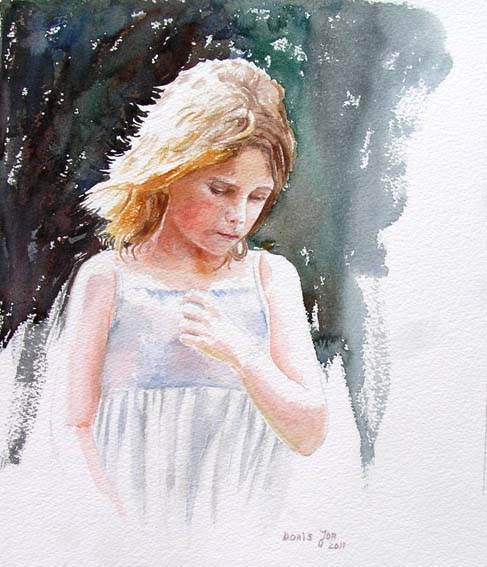
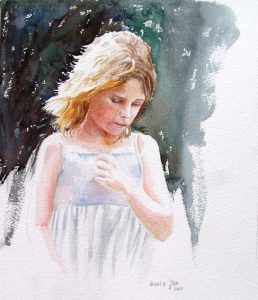
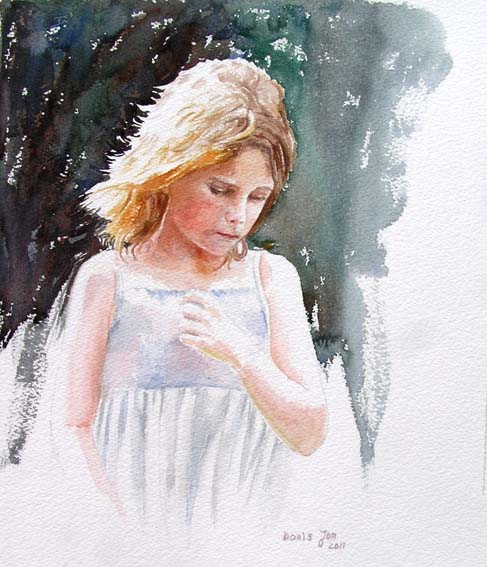
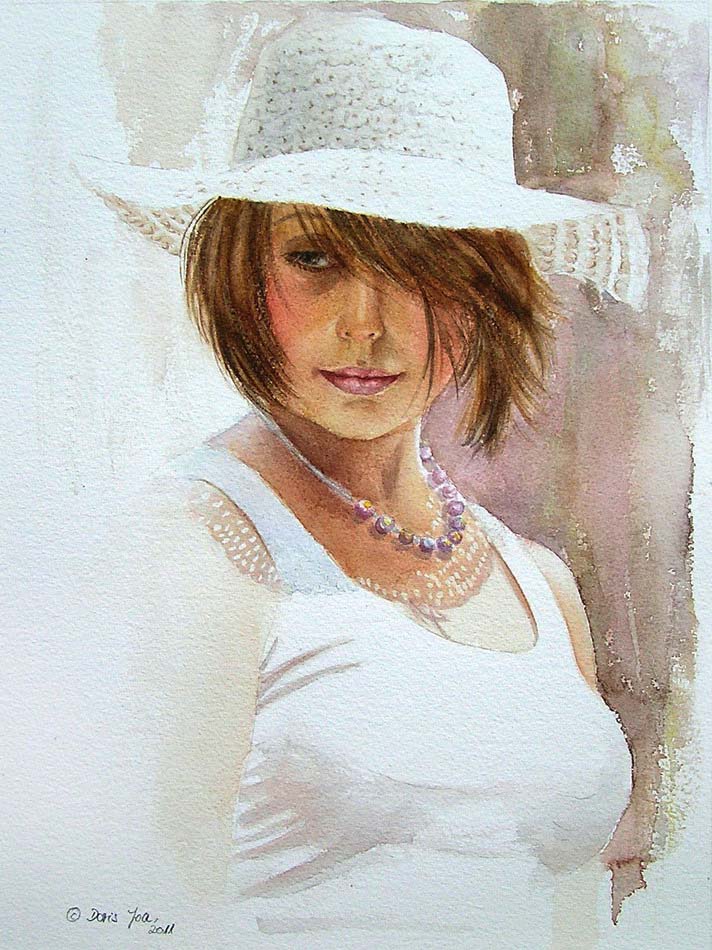
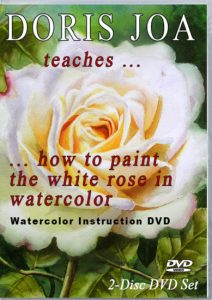
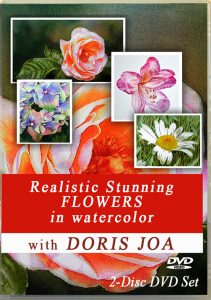
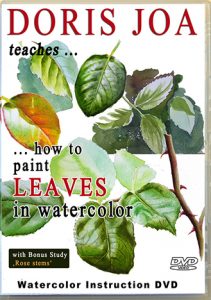
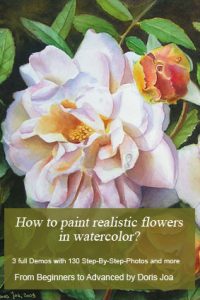
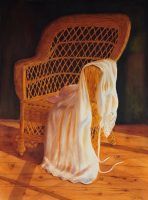
Your instructions were so helpful. I am trying to teach myself watercolor painting. Thank you for sharing, advice and inspiration. Fondly ,Kate